At Aksh weaves and crafts’ small studio in Adyar, there is pin-drop silence except for the faint whirring of a fan. On a table in the centre of the room, an artist is bent over a piece of cloth, drawing with full concentration. When I move closer for a better view, I see a panel with intricate patterns in pencil, parts of which have been coloured in with reds and browns.
“Many of us do not know about the beautiful Nayaka art, which is a culmination of the tradition of the Vijayanagara rulers. Schools of art that came later at Thanjavur and Mysore, are an offshoot of this great tradition,” says Sriya Mishra, co- founder, Aksh Weaves.
Sriya’s love for history, and textiles comes through minutes into our conversation, and it is this passion that has translated into a project they have spent years working on — the nayaka kalamkari textile.
A nayaka kalamkari panel, worked on by Aksh Weaves and Crafts
| Photo Credit:
Special Arrangement
She is among a growing number of Indian textile revivalists who are delving into history, carrying out extensive research, studying weaves, and going the whole nine yards to recreate sarees that are more than a mere six yards of silk. While these revivals have been happening across the country for decades, there’s added heft now from an informed, enthusiastic and passionate customer base that has their interest piqued by a wealth of information online.
These customers who are growing in numbers, are saree enthusiasts, history lovers, or even collectors of weaves — looking to own a drape that is rare, revived, backed by legacy, or sometimes nostalgia.
A deep dive into textile history
“The ancient kalamkari that was practised by the Nayaka rulers was created nearly 400 years ago,” says Sriya. The road to creating a nayaka kalamkari textile was one filled with extensive research and groundwork, given very little information is available in museums or other archives. As a part of this ongoing project, Aksh weaves has created a little more than 15 sarees.
“A saree like this cannot be mass produced. The art which went on the sarees was drawn by hand,” Sriya explains. With a focus on the revival and recreation of Coromandel textiles which includes the nayaka kalamkari, She rattles off a list. “Kalamkari, block printing, batik, jamdani, tie and dye…this is the minimum one needs to know to recreate Coromandel textiles. It has taken my team nearly five years to master these skills, coupled with extensive travel and studying iconography to work on recreations,” she says.
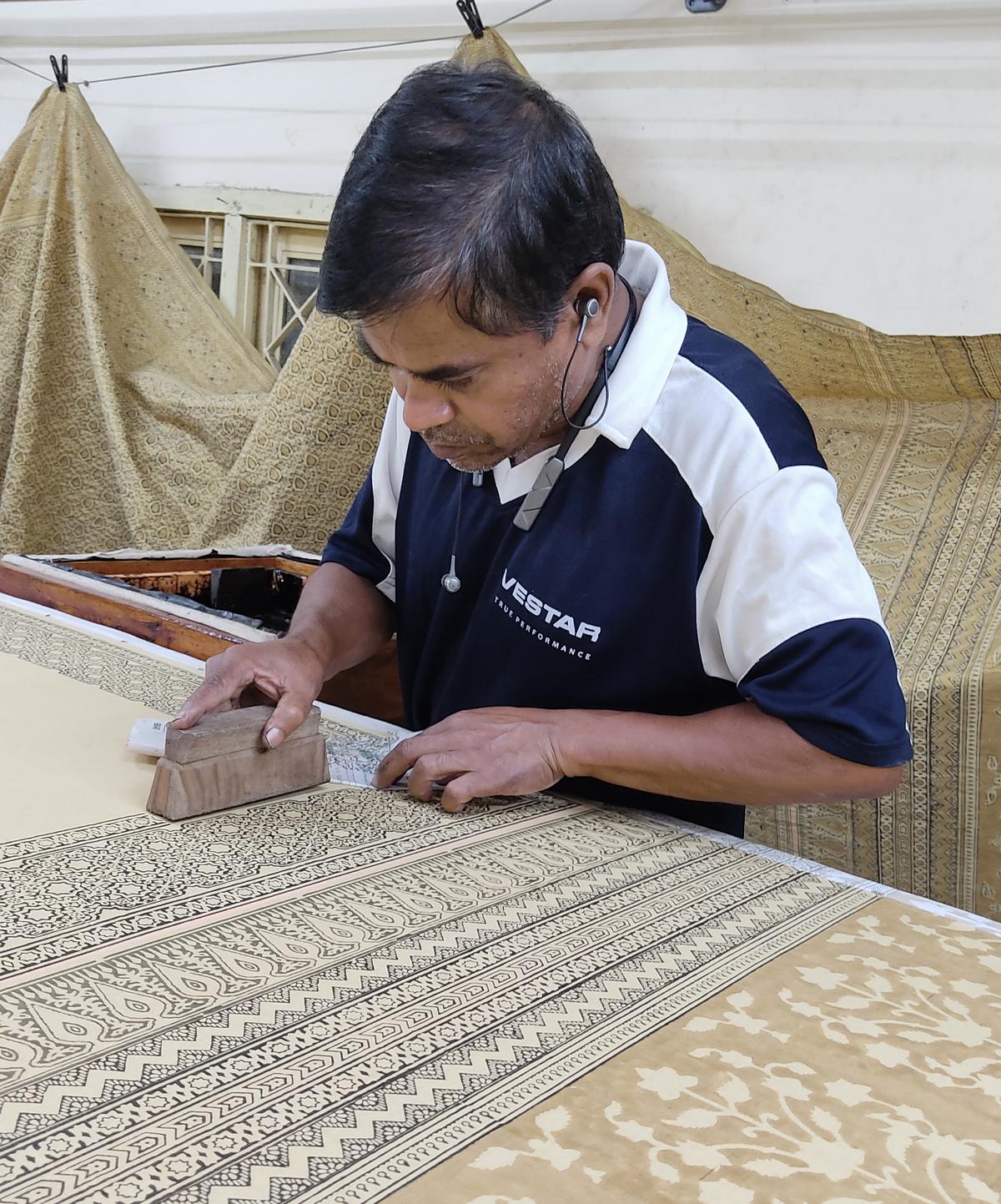
An artisan at working on natural dye block printing on a kodalikaruppur saree at the Aksh Weaves and Crafts studio
| Photo Credit:
Special Arrangement
Aksh weaves has also worked extensively on the revival of Kodalikaruppur sarees which were patronised by the Maratha rulers of Tanjore in the 18th Century, under the mentorship of K Dakshinamurthi. Their upcoming project too is an exciting one, involving a textile that most people haven’t seen or ever worn — chintz.
Projects like these often involve a deep dive into the history of different geographical regions of the country, and its rich legacy of textiles. This was no different for Gayathri KK of Yatri Weaves, a Chennai- based initiative that works on museum recreations.
Initially a saree re-seller, Gayathri says she only knew the bare basics of weaves available in shops until she slowly began to delve deeper into the sarees she was buying. “Kumbakonam had artisans who used to paint on textiles, Ayyampettai was where carpet weaving was done. and satin borders are still being made, and both Kumbakonam and Thanjavur were hubs for ikkat,” she says, running through bits of Tamil Nadu’s lesser-known textile history.

Museum recreations
While her initial project involved recreating Thanjavur ikkat sarees which were traditionally worn for temple ceremonies, Gayathri has kept coming back to museum recreations. “Sarees on display in museums date back centuries, and feature motifs we haven’t seen before as well as distinctive colour combinations. A cherished project for me was recreating a unique saree which I chanced upon in the Victoria Albert Museum Archives online.” The photo from the archives she speaks about, has a queen from Erode wearing a saree and seated in a durbar, dating back to the 1800s.
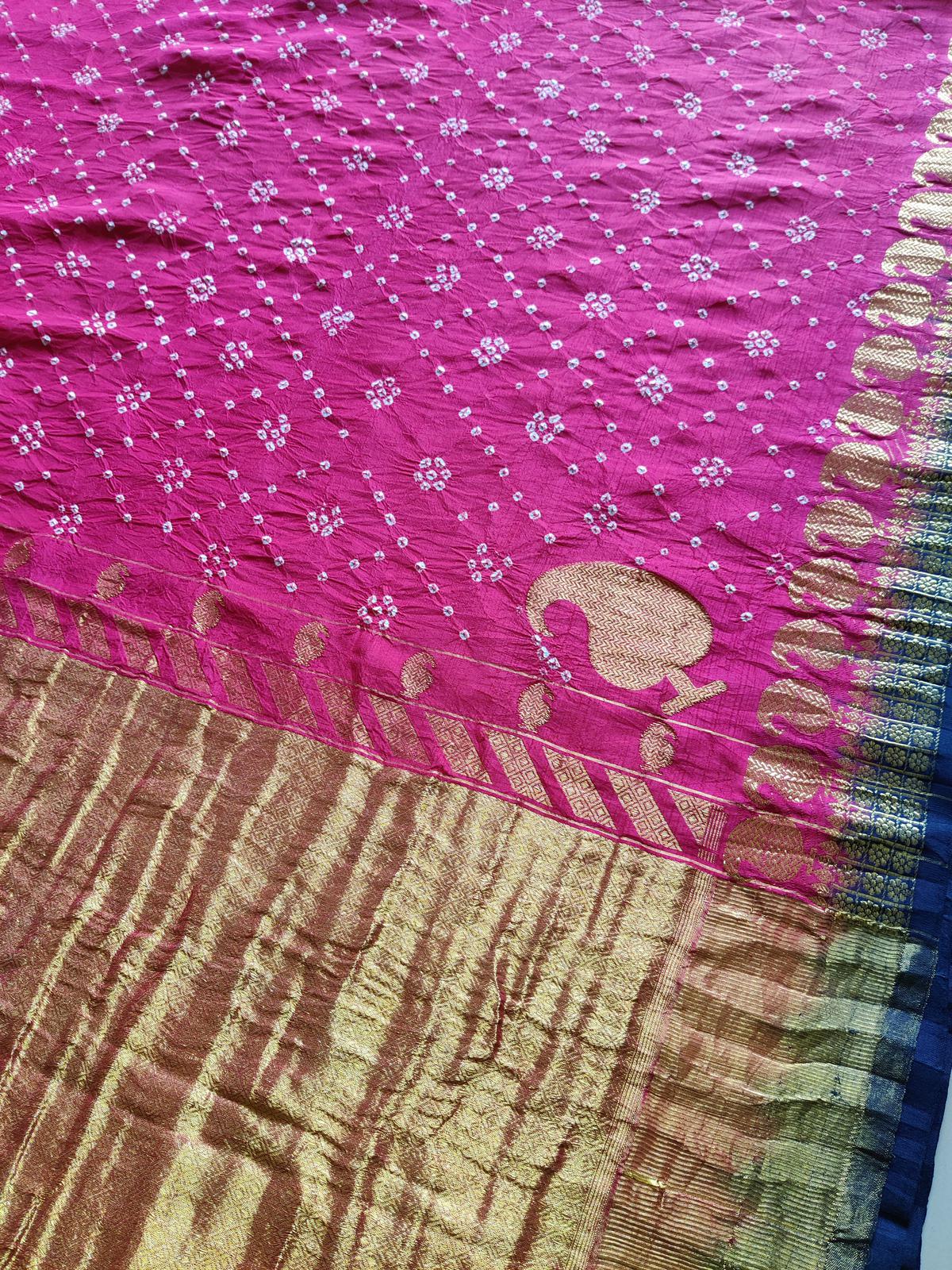
A recreation of the Sungudi saree from Victoria and Albert museum archives, with bandhani work and corner mango patterns by Yatri Weaves
| Photo Credit:
Special Arrangement
When she initially tells me the steps involved in its recreation, I tell her that I have a hard time picturing a saree with work that is so complex and intricate. To reach out to audiences like me, Yatri Weaves’ Instagram page has a short video of the beautiful saree fluttering in the air, with a condensed version of the ‘recreation journey’ — as she calls it
The original saree featured a kamalam bhutta border, corner mango designs,and intricate sungudi work across the body. “Sungudi artisans in Madurai weren’t able to work with us given how small the pattern was, and we then worked with bandhni tie and dye artists. There were several hurdles including the mangoes on the saree being woven in the opposite direction, and toying between the ‘Adai’ or Jacquard set up for weaving.” The ensuing nine months for her, was filled with learning and unlearning.
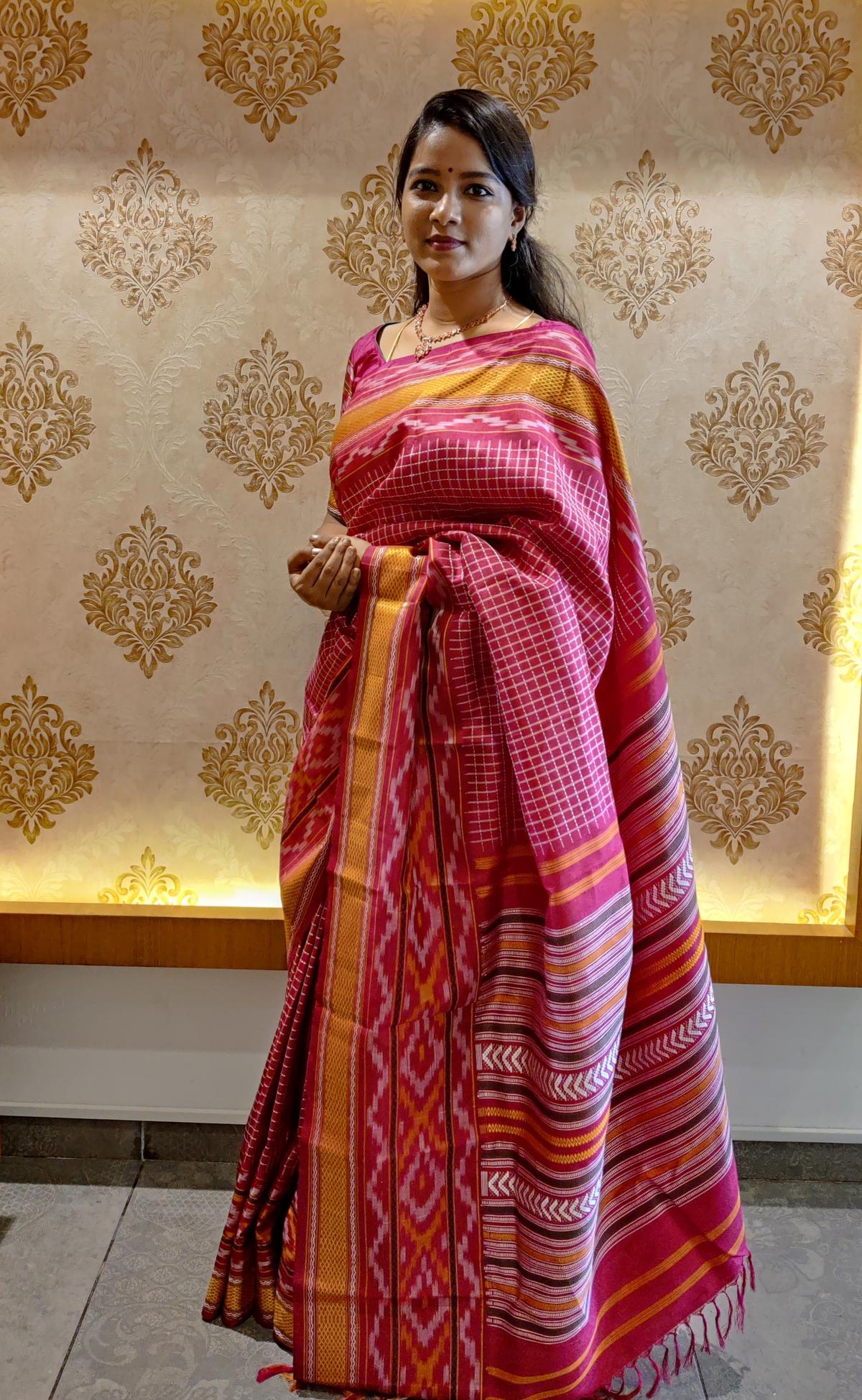
Gayathri KK wears a Thanjavur Ikkat Saree
| Photo Credit:
Special Arrangement
Every project she undertakes, much like this one, has a waiting period for customers, anywhere from a month to a year. “People no longer want something that’s already available, and the demand is for something unique — like this saree for instance which has a history and story behind it,” she says. If not for archives online, Chennai’s own DakshinaChitra has provided a wealth of history and inspiration for her.
Museum recreation sarees are priced upwards of ₹15,000. As individuals working on such projects, their sales channels for such sarees, and bigger saree revival projects are predominantly through a close circle of customers, or on social media, she says.
The weavers and artisans she works with through the project are paid fairly for the time it takes, and projects like this, Gayathri adds, are preferred by them. “Many weavers even have memories of seeing their fathers or grandfathers having worked on weaves like this in the past.”
Impact on weavers
Apart from recreations, the impact of a sustained revival of handloom sarees is immense on the weavers. A pioneer in this regard for around half-a-century now, Vimor, based in Bengaluru has worked with weavers at the grassroots level recreating designs from different regions.
“I have never turned away a weaver,” says Pavithra Muddaya, managing trustee and lead designer of Vimor Handloom Foundation in Bengaluru. With several successful revival projects spanning decades that have contributed to the success stories of many weavers, Pavithra says that the focus is on ensuring they work in a risk-free environment for the duration of a project.
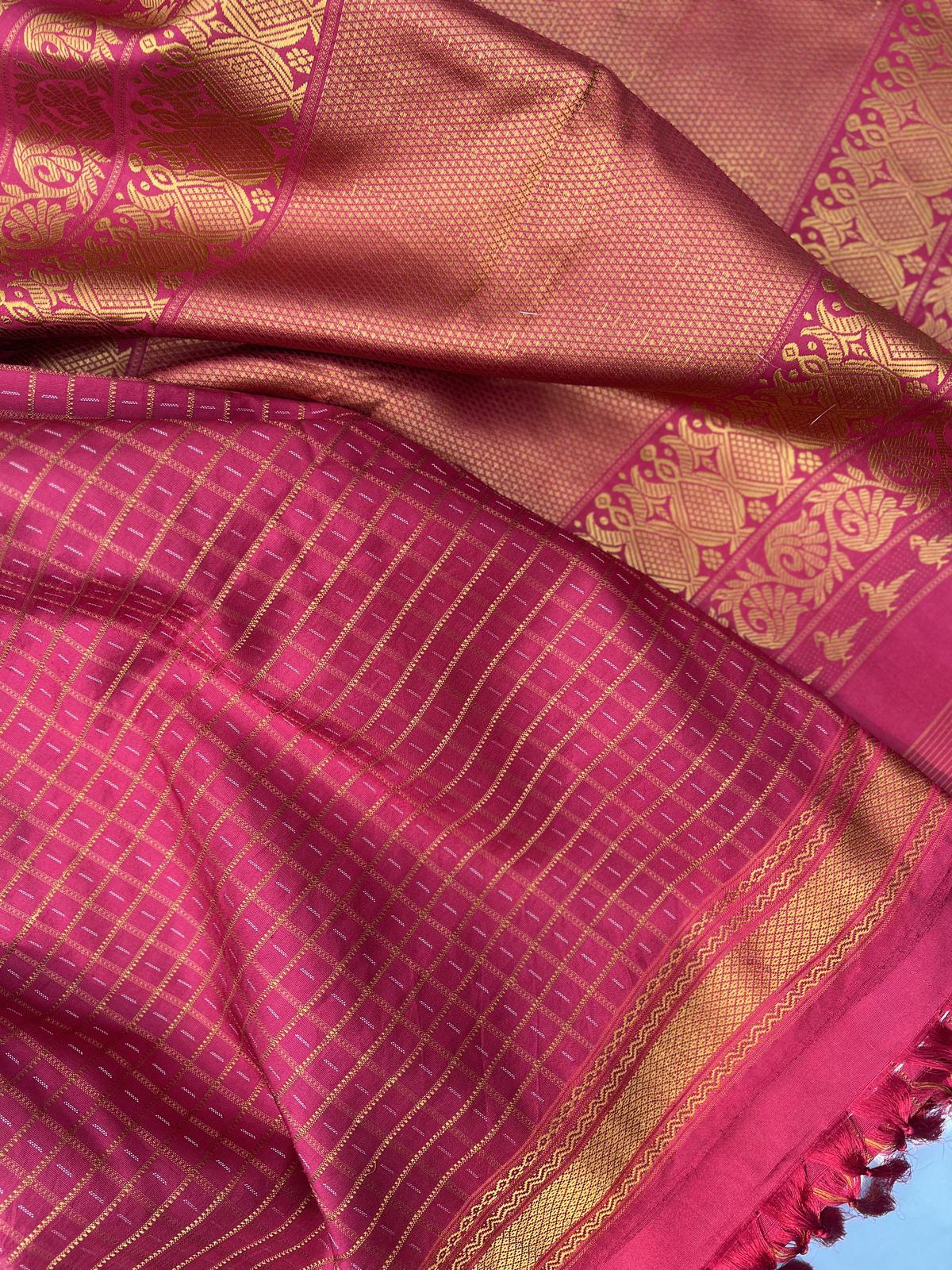
A puja saree recreated by Vimor
| Photo Credit:
Special Arrangement
“We pay an advance, and there is a buy back. A market test is carried out for a year or two with the product being sold through Vimor, and the design is then given away for free. Owing to this system, they know that the saree will sell, and there is food security. Once this is established, they will be creative and experimental,” she says.
The weavers, Pavithra says, are mentored initially, assured that the saree is a saleable product and that they can customise or make adaptations to the design.
Pavithra says that the word ‘revival’ in itself, is something that has been coined recently. “When I started my career 50 years ago, there wasn’t a specific word to encompass what we were doing. We realised that this was a part of our heritage, a cultural inheritance of diverse textiles from each part of the country. and everyone is entitled to this,” she says. Since 1974, Vimor has been working on creating handloom sarees, as well as documenting designs from heritage textiles and its revival.
While they started with the revival of temple sarees, Pavithra says that their iconic ‘puja saree’ has been one of their biggest successes. “We worked on reviving this from a small, simple unit in Dharmavaram, and it continues to be in production nearly 47 years later across different regions. People still want to possess it, and with weavers having worked on it for years now, I am happy that it has gone beyond my name and brand,” she says.
Tracing their journey with the puja saree over the years, Pavithra says that the saree has taken on design adaptations by the weavers. “Our focus was on making a design that was adaptable for the weavers, and made such changes when we worked on the recreation to suit this,” she explains.
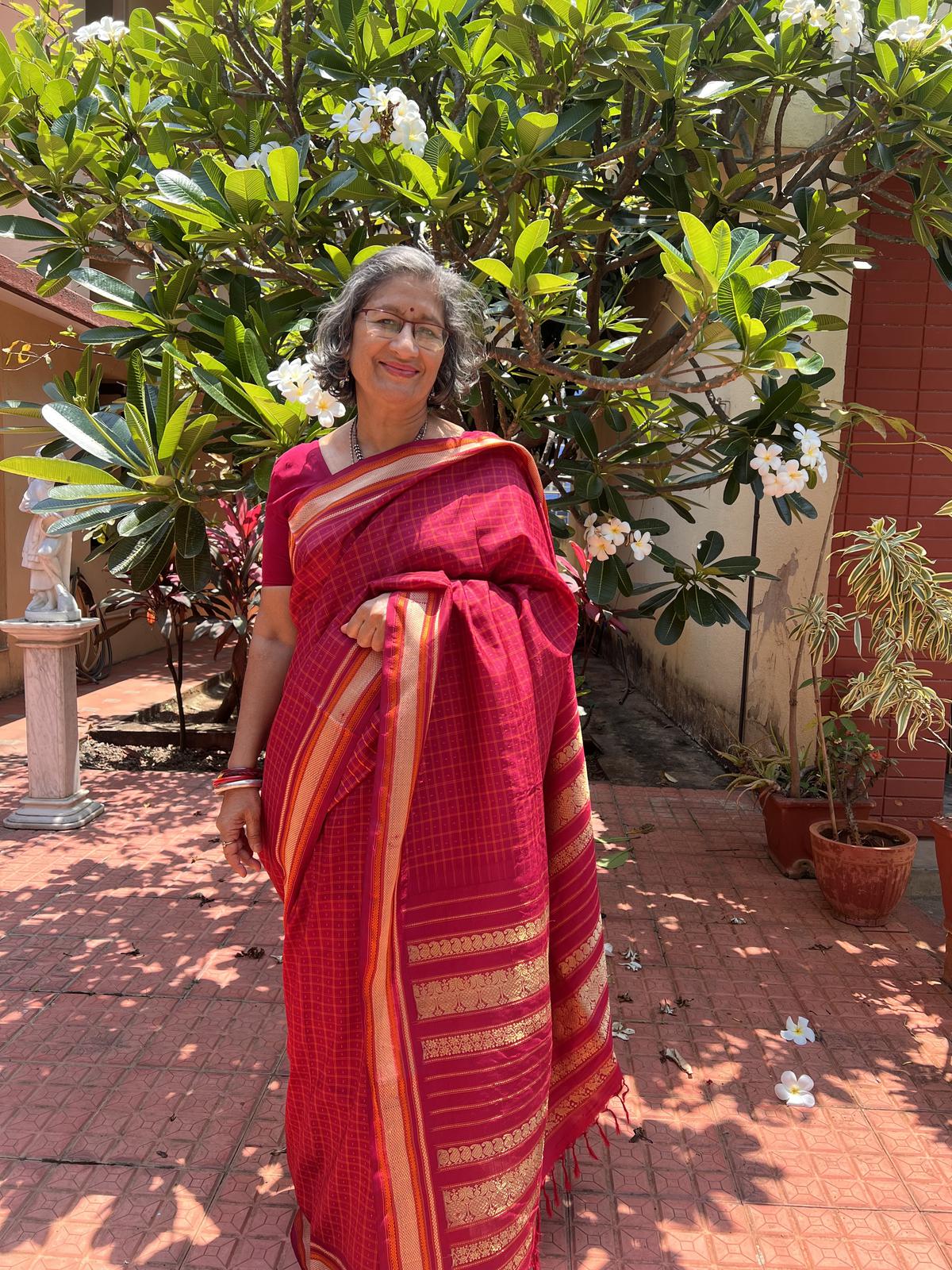
Pavithra Muddaya drapes the Puja Saree recreated by Vimor
| Photo Credit:
Special Arrangement
The weavers they chose to work with aren’t always experts or masters in the craft, and Pavithra says they must take this as well as their financial constraints into consideration while coming up with a design. “It isn’t just about going straight to weavers at the top, but continuing to work with the others, and building them up.”
As someone who has seen the evolution of tastes, preferences, and aesthetics over the last five decades, Pavithra acknowledges that there is a lot more awareness about weaves, and heritage designs among the younger generation now. “Not only are they exposed to a lot more knowledge, but they are grounded in celebrating their roots and indianness. This is the kind of energy that supports the handloom industry we need to keep going,” she affirms.
Given the festive season and all the shopping it brings forth, an exquisite revival saree, or a piece that has a history and an interesting story of creation to tell, might just be an ideal addition to your wardrobe.






